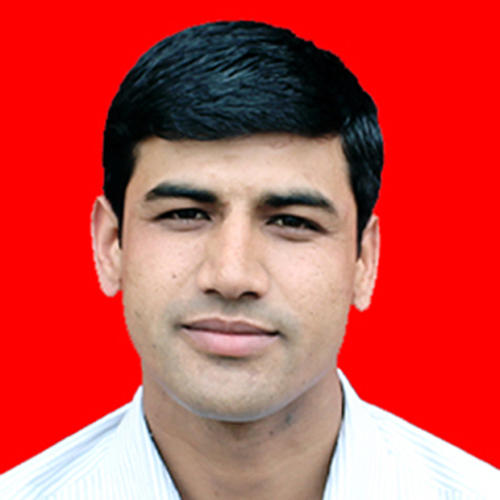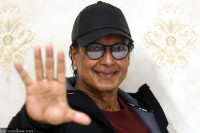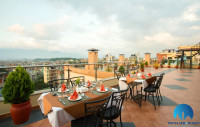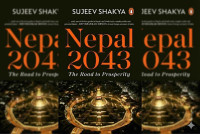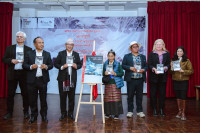Culture & Lifestyle
Everything you need to know about the Barka dance
The expensive and high-risk dance is under threat—but communities are now trying to conserve it.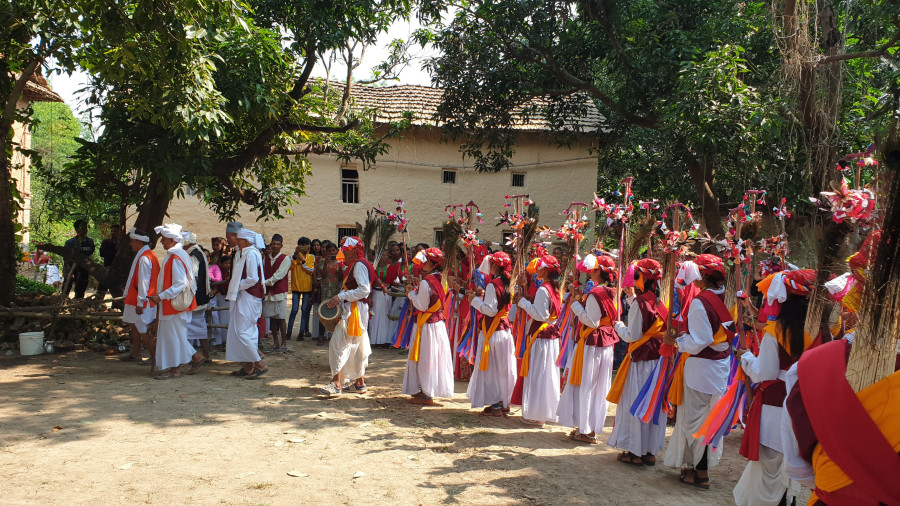
Durgalal KC
The residents of Jalaura were particularly excited for this year’s Tihar. Although the festival is celebrated with the same fervour every year, this year there was an added allure: the villagers at Ghorahi sub metropolis were able to witness the Barka dance, a traditional Tharu dance, for the first time in a long time. It had been 21 years since the community last organised this dance, which is believed to keep locals safe from danger and diseases.
Barka, which literally translates to ‘big’ in the Tharu language, is based on the tales of the Mahabharata. The dance, which is carried out from the day of Krishna Janmasthami to Tihar is performed after a long cultural and religious procedure. Though condensed versions of this dance are frequently performed during different festivals and fairs, the complete dance requires worshipping different gods and goddesses, with no room for errors on the part of the dancers.
“There is a belief that this dance promotes good harvest and cures illnesses, but many people are afraid to perform it because it involves the worshipping of deities,” said Chandra Prasad Chaudhary, an expert of this dance form and chairman of Dang’s Tharu Mahatawa Association.
Before dancers start their performance, 33 kotis (330,000) deities need to be worshipped. The dancers also have to be attentive of their every step and movement because if not done properly, it is believed that the dance will unveil disaster, locals believe. But if the dancers perform the dance with deep reverence, it is believed that they will gain divination through the dance.
“If all the steps—from following the correct procedural worship, to selecting the song to performing the dance movements—aren’t properly followed, people believe that the devil may enter the dancer’s body and destroy them,” says Chaudhary. “Due to this belief, not many people come forward to perform the Barka dance.”
As the dance is regarded as an interpretation of the Mahabharata, it adds to the difficulty of the dance, according to Chaudhary, as one needs to decipher the tales correctly. The songs that are sung during the performances are known as Barkamar, which can be literally translated to ‘big battle’ in the native tongue. Barkamar details the bravery of the Pandavas, the five brothers and the main protagonists of the epic, and criticises the injustices carried out by the Kauravas.

This is the reason why during the Bhuiyaar puja, a special ceremony is carried out before the dance commences, where five different animals are offered to the gods. The sacrifice includes two billy goats, two sheep, three baby goats, eight pigs and 40 chickens.
Besides the dancers, the elders and shamans play an important role in the dance too: they are the main singers during the performance. The main shaman also makes rounds, chanting various mantras, to protect people from being attacked by ghosts and spirits during the performance.
This song, which consists of advice, lessons and messages, is also sung during Dashain while getting Tika from the village elder and during harvest.
“Barkimar is sung in 12 parts,” said Bejhu Lal Chaudhary, a Barkimar singer of Sisaniya. “It encourages people to be responsible and fight injustice, and it inspires women to fight for their existence and dignity.”
But apart from that, the Barka dance is taken as a symbol of peace and friendship. At least 30 dancers are required to perform it.
“The song must be sung continuously from the time of cutting paddy to bringing the grains inside the house,” said another dancer Bharat Chaudhary, who is also a shaman. “Everybody wishes peace and friendship to prevail everywhere.”
But even with the dance having such importance in the community, the locals have not been able to give continuity to the dance form.
Ruplal Chaudary, the father of Chandra Prasad, performed the Barka dance for the first time in Mahadeva village in Gowardihaa, Deukhuri, in 1922. It was performed for the second time 31 years later, in 1953. But according to tradition, the dance should be performed regularly, every five years. So, with Ruplal’s initiative, the ceremony was carried out in an interval of five years till 1968. But it was halted when he passed away in 1970. After his demise, nobody dared initiate the Barka dance in the community.
“Barka dance disappeared after my father’s death. It was my father’s desire to continue it in regularly but I failed to respect his wishes,” said Chaudhary. “I couldn’t find artistes who wanted to take the dance forward.”
It wasn’t just the strict following of the rituals that has hindered the continuation of the dance. The dance also demands a lot of resources and a lot of commitment from the community. According to Chaudhary, the total cost to organise the dance could be up to Rs700,000.
In 1998, an American citizen, who was doing his PhD on the Mahabharata, had come to the Ghorahi in search of this dance. When he decided to bear all the costs, the Barka was performed. Then, it took another 21 years for the community to come together and dance again.

“It is very difficult to manage artistes and the budget. The worshipping of the deities also takes time and considerable finances,” said Heera Lal Chaudhary, a shaman from Jalaura. “Then there was also the belief that dreadful things would happen if the dance goes wrong.”
But all the elements finally came together this year after the Ghorahi sub metropolis decided to fund the ceremony. But whether they will be able to provide the same resources in the next five years is doubtful. Hence, in order to document the ritual and performances, Tharu Kalyankarini Sabha has decided to make a documentary of the dance form.
“We fear the dance will go extinct if is not performed regularly,” said Bhuwan Chaudhary, chairperson of Tharu Kalyankari Sabha. “We hope this documentary will help conserve this important part of our culture.”




 8.12°C Kathmandu
8.12°C Kathmandu